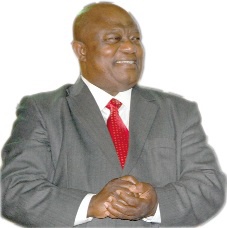- Home - News
- TWI News | TV
- Polls
- Year In Review
- News Archive
- Crime & Punishment
- Politics
- Regional
- Editorial
- Health
- Ghanaians Abroad
- Tabloid
- Africa
- Religion
- Election 2020
- Coronavirus
- News Videos | TV
- Photo Archives
- News Headlines
- Press Release
Business News of Tuesday, 14 July 2015
Source: B&FT
National Export Strategy to cost US$500 million
 Mr. Gideon Quarcoo, CEO--GEPA
Mr. Gideon Quarcoo, CEO--GEPA
Government will need to expend about US$500million to develop its five-year National Export Strategy, which is aimed at raising the level of export proceeds from the Non-Traditional Export sector, CEO of the Ghana Export Promotion Authority (GEPA) Gideon Quarcoo has announced.
The country’s chief exports promoter however expressed optimism that establishment of Exim Bank Ghana will aid the country’s effort to leverage funding for the US$500m National Export Strategy.
The Export Strategy is under the auspices of GEPA and intended to boost local produce globally, so as to shore-up the country’s foreign revenue.
In August 2013, government launched the National Export Strategy (NES) aimed at raising the level of export proceeds from the Non-Traditional Export to US$5billion by the year 2019.
Cabinet has approved the National Export Strategy to diversify Ghana’s exports by increasing the share of Non-Traditional Exports (NTEs) in the export base.
The strategy will also lift NTEs by 35% within the next five years. The target of this strategy is to take the current level of NTEs from US$1.5billion to US$5billion within the period.
By the close of the year 2015, the sector is expected to yield US$2.6billion -- about 3.4% above the earnings of 2014 (US $2.514billion).
“To ensure that the target of 2015 as well as the achievement of the US$5billion in 2019 is met, there must be aggressive implementation of the various projects in the national export strategy by GEPA as well as other activities.”
Work on the export strategy is already underway, Mr. Quarcoo claims. “The way we are approaching is we do a baseline to determine with the required specification what the state of each of those areas is; this will help fashion a roadmap for the value chain that is involved in each of the product areas.”
According to Mr. Quarcoo, 11 product areas have been selected to ensure that the produce exported is properly assessed and meets global demands.
“In order to channel energy in the most efficient way, we have teased-out 11 product areas that need immediate attention. Those products include cocoa, yam, shea-butter, horticultural produce, pineapples, mangoes, cashew, and fish among others.”
Under the Agricultural Growth and Opportunity Act (AGOA), he explained that Ghana has selected the area of apparel and garments, in order to gain access to the American market. Other areas include rubber and palm oil.
The CEO of GEPA also urged government to work toward the realisation of good macro-economic conditions; such as stabilisation of the cedi, reduction in inflation, as well as adequate provision of resources such as water and energy.
“Government must make funds available to enable us assist the private sector to drive the anticipated increases in Non-Traditional Export revenue this year and beyond.
EDAIF must also intensify its expansion of credit facilities to exporters and export facilitating institutions to help them to carry out their activities and increase earnings from the sector,” he said.










